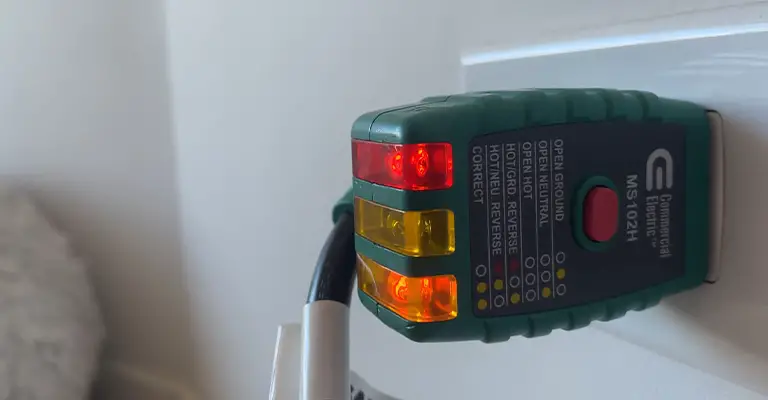Door Jamb Repair: Step-by-Step Solutions for a Secure Home
Nothing undermines the security of your home like a damaged door jamb. The structural integrity of your doors depends on this crucial component, which can often be overlooked until there’s a noticeable problem. Today, we’ll delve into the necessary steps for efficient door jamb repair. We want to help you secure your home effectively and save costs by guiding you through this simple DIY task.
Understanding Door Jamb Damage
Door jamb damage can arise from various sources – a forceful break-in, moisture exposure, or regular wear and tear. The most common signs include loose hinges, difficulty in closing the door, and visible cracks. Once you identify these symptoms, it’s crucial to act promptly. Not only does a damaged jamb compromise your door’s functionality, but it also poses significant security risks.
Preparing for the Repair
Before diving into door jamb repair, you’ll need to gather some essential tools. These include a hammer, nails, wood filler, a screwdriver, a chisel, sandpaper, and paint or varnish to match your existing door color. By assembling everything in advance, you’ll streamline the repair process.
The Door Jamb Repair Process
1. Removal of Damaged Areas
Begin by inspecting the damaged jamb. If the damage is extensive, you might need to replace the entire frame. However, minor damages like cracks and splits can be repaired easily. Use a chisel to remove damaged sections carefully. Be sure to work slowly to avoid inflicting further damage.
2. Filling and Repairing
Once the damaged areas are removed, use wood filler to repair the surface. Apply it generously into the areas you’ve chiseled out. Allow the filler to dry thoroughly as per the manufacturer’s instructions. After it’s dry, use sandpaper to smoothen the surface, ensuring it aligns with the rest of the jamb.
3. Reinforcement
For added security, consider reinforcing the door jamb. One popular method involves installing steel plates along the jamb’s length. These provide additional strength and can deter potential break-ins.
4. Finishing Touches
To conclude, repaint or re-varnish the repaired area to match the existing color. This step will ensure your door jamb not only functions correctly but also looks as good as new.
Professional Assistance
While door jamb repair can often be a DIY task, in some cases, professional help might be necessary. This can especially be true for historic homes where the door frames could be complex or for damages too severe for a novice DIY-er. Don’t hesitate to call in professionals to ensure the job gets done right and preserves the integrity of your home.
Benefits of Door Jamb Repair
Undertaking door jamb repair not only addresses immediate problems but also provides long-term benefits. Firstly, it helps increase the security of your home. A sturdy door jamb will deter intruders, and if reinforced with steel plates, it can significantly enhance your door’s resilience. Secondly, it ensures the smooth operation of your door, eliminating problems with sticking or not fitting correctly. Lastly, a well-maintained door jamb boosts your home’s aesthetic appeal, creating an inviting entrance for guests.
Advanced Door Jamb Repair Techniques
For damages that extend beyond the surface, you might need to employ more advanced repair techniques. One such method involves the use of a repair kit, which includes a jamb brace, a hinge shield, and a lock shield. These components provide added strength to your door jamb and are particularly useful for reinforcing doors that have been previously broken into.
Installation of a Jamb Brace
Start by fixing the jamb brace onto the interior face of the door jamb. It should run the full length, effectively adding a protective layer to the wooden structure.
Fitting a Hinge Shield
The hinge shield goes over your existing door hinges, offering an additional layer of protection. Be sure to follow the manufacturer’s instructions for accurate fitting.
Adding a Lock Shield
The lock shield is positioned around the lock area on the door jamb, reinforcing this vulnerable area against forceful entry.
Advanced repair techniques, while slightly more complex, offer an excellent solution for reinforcing and repairing significantly damaged door jambs.
Preventing Door Jamb Damage
Prevention is always better than cure, and this stands true for door jamb maintenance as well. Regular inspection for signs of wear and tear can help you address minor issues before they escalate. Additionally, consider installing weatherstripping to protect the door jamb from moisture damage and reinforcing the door jamb as a preventive measure against break-ins.
Final Thoughts
Addressing issues such as a warped door frame or wood rot early on can save you from the expense of replacing the entire door frame. Employing simple repair tools such as a scrap wood block or door shims and materials like wood screws or epoxy filler can aid in reshaping the door or filling in minor wood damages. Be sure to work carefully with the existing frame, ensuring that any repairs align with the wall frame.
When choosing your repair materials, it’s advisable to avoid pressure-treated wood. Instead, opt for cut timber that matches the rest of your door. And remember, the finer details matter. Use a putty knife to apply epoxy filler in damaged areas, lightly sand down the repaired surface, and re-secure your door using new hinge screws. In severe wood rot cases, you may need to resort to a folded wire mesh for structural reinforcement before applying your filler.
Finally, a pry bar can be invaluable for removing hinge pins or detaching the entire frame if necessary. Whether you’re dealing with a minor wood repair or a warped door frame, adopting these strategies can help you ensure your door jamb is as secure and aesthetically pleasing as possible. By tackling door jamb repairs promptly and effectively, you can ensure the longevity of your doors and the overall security of your home.






